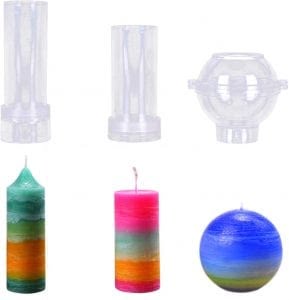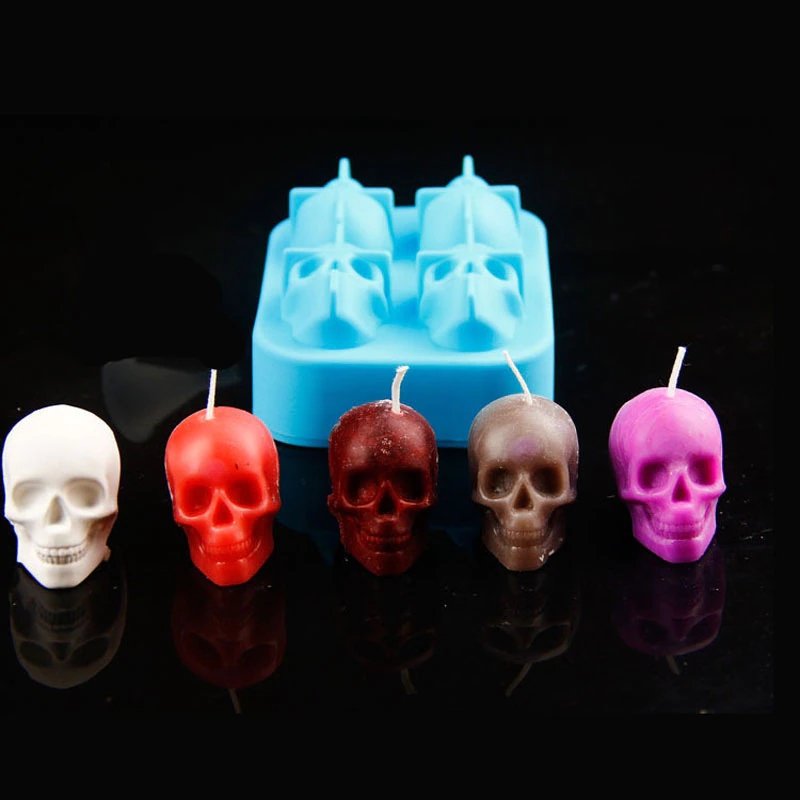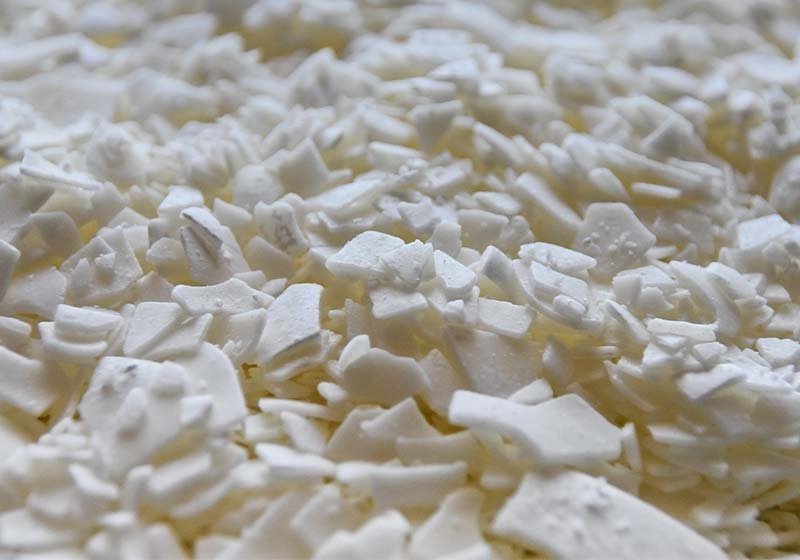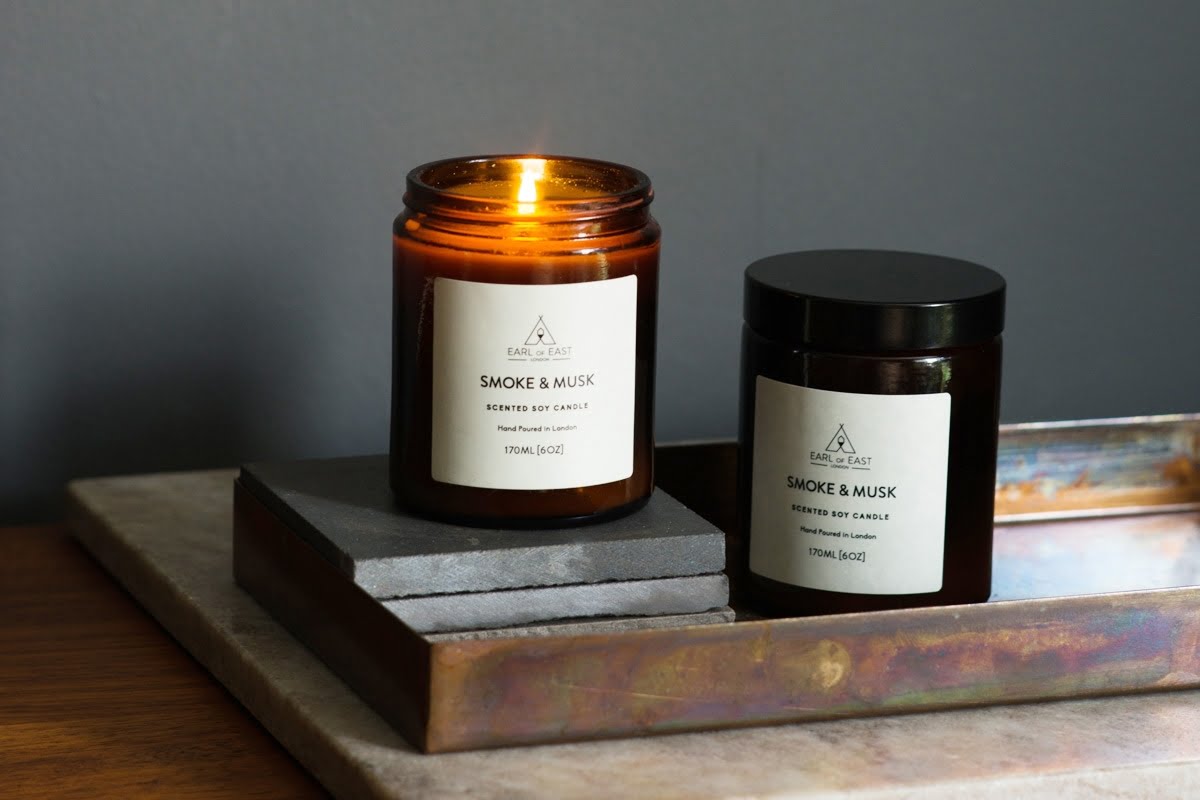Candle making has evolved from a simple craft to a creative artform, often enhanced by the use of essential oils. In recent years, there has been a significant rise in the popularity of incorporating these potent plant extracts into candles. This article will delve into the world of essential oils in candle making, exploring their importance and how they can elevate your candle crafting experience.
One of the key benefits of using essential oils in candles is their ability to add fragrance. While traditional candles may contain synthetic fragrances or no scent at all, essential oils provide a natural and aromatic alternative. These oils not only fill your space with delightful scents but also offer therapeutic benefits through aromatherapy. Imagine creating a calming lavender-scented candle for relaxation after a long day or an invigorating citrus blend to boost your mood – the possibilities are endless.
Understanding essential oil concentrations is crucial when it comes to candle making. Different concentrations yield varying levels of fragrance intensity and longevity. It’s important to have a general overview of essential oil concentrations and their appropriateness for candle making. By understanding this concept, you can create candles that have just the right amount of fragrance, striking the perfect balance between subtlety and noticeable aroma.
In the next section, we will explore factors to consider when determining the number of essential oil drops for candles. The scent strength desired, type of wax used, and candle size are all variables that play a role in finding the ideal amount of essential oil drops for your creations. By considering these factors carefully, you can achieve consistent results with every batch of candles you make.
With each new candle-making project comes an opportunity for experimentation and creativity. Whether you want to create unique scent combinations or stick with popular favorites like lavender or vanilla, mixing different essential oils allows you to unleash your creativity and design truly personalized candles. In our following section on blending essential oils for unique fragrance combinations, we will provide tips and tricks to help you craft captivating scents that leave a lasting impression.
As we delve deeper into the world of essential oils in candle making, we will also discuss recommended essential oil drops for various candle scents and offer tips for adjusting the amount based on personal preferences. Additionally, we will cover safety precautions when handling essential oils, ensuring that you can enjoy your aromatic creations without any harm. Finally, we will share some final tips to help you perfect your essential oil drops and troubleshoot common issues along the way.
Are you ready to embrace the world of essential oils in candle making? Let’s journey together and uncover the limitless possibilities that await us.
Understanding Essential Oil Concentrations
What are Essential Oil Concentrations?
Essential oil concentrations refer to the amount of essential oil used in relation to the other ingredients in a candle. In candle making, essential oil concentrations are essential for achieving the desired fragrance and aromatherapy benefits. It is important to understand that different essential oils have varying concentrations, and using them appropriately can greatly enhance the quality of the candles.
When it comes to essential oil concentrations, there are generally three types: low, medium, and high. The concentration level determines the intensity of the fragrance emitted by the candle when it is burned. Low concentration refers to using a small amount of essential oil in proportion to other ingredients such as wax and additives.
This may result in a more subtle scent throw when the candle is lit. On the other hand, medium concentration uses a slightly higher amount of essential oil, giving off a moderate fragrance that fills the space with aroma without being overpowering. High concentration involves using a larger quantity of essential oil, resulting in a stronger and more potent scent.
Choosing the Right Concentration for Your Candle Making
The choice of essential oil concentration depends on various factors, including personal preference, desired scent strength, type of wax used, and purpose of the candle. For those looking for a gentle fragrance or practicing aromatherapy through candles, a low or medium concentration might be suitable. However, if you want an intense and long-lasting aroma experience or prefer strongly scented candles for large spaces, a higher concentration might be more appropriate.
It is worth noting that some essential oils have naturally stronger fragrances than others even at low concentrations. Therefore, it is advisable to start with smaller amounts during experimentation and gradually increase until finding the desired level. Additionally, certain waxes can affect scent throw as well; soy-based waxes tend to retain fragrance better compared to paraffin waxes.
Understanding how different levels of essential oil concentrations impact the overall scent of the candle is key to creating a successful and enjoyable aromatic experience. Experimenting with various concentrations will allow candle makers to find the perfect balance that suits their preferences and meets their customers’ expectations.
Factors to Consider When Determining Essential Oil Drops for Candle Making
When it comes to determining the number of essential oil drops for candle making, there are several important factors to consider. These factors will help you ensure that your candles have the perfect scent strength and aroma. By taking into account these considerations, you can create candles that not only smell amazing but also provide the desired therapeutic benefits.
Scent Strength
One crucial factor to consider when determining the number of essential oil drops for candle making is the desired scent strength. Some people prefer a subtle scent, while others enjoy a stronger fragrance. It’s important to keep in mind that certain essential oils have a stronger scent than others, so you may need fewer drops of a potent essential oil compared to a milder one.
Wax Type
The type of wax you use in your candle-making process will also affect the number of essential oil drops needed. Different waxes have different absorption rates and melting points, which can impact how well they hold onto and release fragrances. For example, soy wax tends to hold onto scents better than paraffin wax, so you may need slightly more drops of essential oil when using soy wax.
Candle Size
The size of your candle will play a role in determining the appropriate amount of essential oil drops. Larger candles typically require more drops to achieve the desired scent throw compared to smaller ones. It’s important to remember that adding too many essential oil drops can overpower the candle and diminish its quality, while adding too few may result in a weak scent throw.
To determine the ideal number of essential oil drops for your candle, it’s always best to start with small amounts and gradually increase until reaching the desired scent strength. Keep track of your measurements and take notes during each batch so you can replicate successful combinations in future creations.
By considering these factors carefully when determining how many drops of essential oil to use in your candles, you can create beautifully scented and therapeutic candles that enhance any space. Experiment with different combinations and scents to find your perfect balance, and remember to always prioritize safety when working with essential oils.
Calculating Essential Oil Drops Based on Candle Size and Wax Type
When it comes to creating the perfect scented candle, determining the right amount of essential oil drops is crucial. The amount of essential oil used can greatly impact the final fragrance intensity and overall experience. In this section, we will break down the formulas and calculations to help you accurately calculate the ideal number of essential oil drops based on candle size and wax type.
To begin, it’s important to understand that different candle sizes and types of wax require varying amounts of essential oils. A larger candle will naturally require more drops compared to a smaller one in order to achieve a balanced scent. Additionally, certain waxes have different scent throw capabilities, meaning some may require more drops than others to achieve the desired fragrance strength.
To calculate the appropriate number of essential oil drops for your specific candle size and wax type, follow these steps:
- Determine your desired scent strength: Consider how strong you want the fragrance to be in your candle. This can vary based on personal preference or the intended purpose of the candle.
- Consult a reliable reference guide or manufacturer recommendations: Different types of wax may have specific guidelines on recommended fragrance load percentages. These guidelines will provide valuable insights into how many drops of essential oil are appropriate for your chosen wax type.
- Use a formula or calculation: Once you have determined your desired scent strength and consulted relevant guidelines, you can use a simple formula or calculation to determine the number of essential oil drops needed.
– For example: (Candle Size in ounces) x (Recommended Fragrance Load Percentage) = Total Drops Required Remember that these formulas are meant as general guidelines and may need adjustments based on personal preference or specific recipes. It’s always recommended to start with a smaller amount of essential oil drops and adjust gradually as needed during test burns.
By accurately calculating the ideal number of essential oil drops based on candle size and wax type, you can ensure consistent results and create candles that deliver delightful fragrances every time.
Mixing Essential Oils for Unique Fragrance Combinations
Mixing essential oils is a fun and creative way to create unique and captivating fragrance combinations in candle making. By blending different essential oils together, you can customize the scent of your candles and create an aroma that is truly one-of-a-kind. However, it’s important to understand scent families and notes when blending essential oils for candles.
When blending essential oils, it’s helpful to think about the concept of scent families. Scent families refer to different groups of scents that share similar characteristics or attributes. Some common scent families include floral, citrus, woody, herbal, and spicy. Understanding which scents fall into each family can help you create harmonious blends.
Within each scent family, there are also different notes to consider. Notes refer to how quickly or slowly a scent evaporates or dissipates. There are three main types of notes: top notes, middle notes, and base notes.
Top notes are the initial scents that you smell when you first light a candle. Middle notes emerge after the top notes have dissipated and provide depth to the fragrance. Base notes are the longest-lasting scents that linger even after the candle has been extinguished.
To create a well-balanced blend of essential oils, it’s important to include a combination of top, middle, and base note scents. This will ensure that your candle has layers of fragrance that evolve over time when lit.
| Scent Family | Top Note Essential Oil | Middle Note Essential Oil | Base Note Essential Oil |
|---|---|---|---|
| Floral | Bergamot | Lavender | Vetiver |
| Citrus | Orange | Lemongrass | Cedarwood |
| Woody | Pine | Sandalwood | Patchouli |
Remember, blending essential oils is a creative process, and it’s all about finding combinations that you love. Don’t be afraid to experiment and try different combinations until you find the perfect fragrance for your candles.
Recommended Essential Oil Drops for Different Candle Scents
When it comes to creating different candle scents using essential oils, the possibilities are endless. Each essential oil offers a unique aroma and therapeutic properties, allowing you to customize your candles according to your preferences and desired mood. Here are some recommended essential oil drops for various candle scents:
Lavender
- 10-12 drops of lavender essential oil for a soothing and relaxing scent that promotes sleep and reduces stress.
- Adjust the amount based on personal preference and desired intensity.
Vanilla
- 6-8 drops of vanilla essential oil for a warm and comforting scent that creates a cozy atmosphere.
- Vanilla has a strong fragrance, so be cautious not to overpower other scents when blending.
Citrus
- 8-10 drops of citrus essential oils such as lemon, orange, or grapefruit for a refreshing and uplifting scent.
- Citrus oils have a bright aroma that can help boost mood and energy levels.
Peppermint
- 4-6 drops of peppermint essential oil for an invigorating and minty scent that revitalizes the senses.
- Peppermint is potent, so use sparingly in combination with other oils or adjust according to personal preference.
Eucalyptus
- 6-8 drops of eucalyptus essential oil for a clean and purifying scent that enhances respiratory health.
- Eucalyptus blends well with other oils like lavender or peppermint for more complex fragrances.
Remember, these are just recommendations to get you started. Feel free to adjust the number of essential oil drops based on your personal preference. If you prefer a stronger scent, you can add more drops, but be cautious not to overwhelm the fragrance. It’s always best to experiment and find the perfect balance that suits your liking.
To enhance your creativity and create unique fragrance combinations, consider blending different essential oils. Understanding scent families and notes can help you create well-balanced blends. For example, combining floral scents like lavender and rose with a hint of citrus can create a refreshing and romantic atmosphere.
Before using any essential oil, it’s important to be aware of safety precautions. Essential oils are highly concentrated substances that should be handled with care. Always perform a patch test on your skin to check for any adverse reactions. Also, keep in mind that certain essential oils may cause sensitivities or allergies in some individuals.
Now that you have an idea of recommended essential oil drops for different candle scents, let your creativity soar. Experiment with various combinations and create unique aromas that will enhance the ambiance of your space. Enjoy the process and embrace the world of essential oils in candle making.
Safety Precautions When Handling Essential Oils for Candle Making
When working with essential oils in candle making, it is crucial to prioritize safety. Essential oils are highly concentrated and potent substances that require proper handling and storage. Failing to follow safety precautions can lead to accidents or adverse health effects. Therefore, it is essential to be aware of the potential risks associated with essential oil usage and take necessary precautions to protect yourself and others.
Firstly, always use essential oils in a well-ventilated area. This will help prevent inhalation of concentrated fumes, which can be overwhelming or even harmful. It is recommended to work in a spacious room or outdoors when handling essential oils.
Furthermore, ensure that you have the appropriate personal protective equipment (PPE). Disposable gloves and safety goggles are recommended when handling undiluted essential oils to protect your skin and eyes. Some individuals may also prefer using a mask or respiratory protection when working with particularly strong-smelling oils.
Proper storage of essential oils is another crucial aspect of safety. Essential oils should be stored in dark glass bottles away from direct sunlight or heat sources. Make sure to keep them out of reach from children and pets as well.
Lastly, always perform a patch test before using any new essential oil on your skin or incorporating it into candles. Patch testing involves applying a small amount of diluted oil onto a small area of skin to check for any adverse reactions or sensitivities.
By adhering to these safety precautions, you can enjoy the benefits of using essential oils in candle making while prioritizing your well-being.
| Safety Precautions | Key Points |
|---|---|
| Work in a well-ventilated area | Prevents inhalation of concentrated fumes |
| Use personal protective equipment | Gloves, goggles, and respiratory protection if desired |
| Store essential oils properly | In dark glass bottles away from sunlight and heat |
| Perform a patch test before use | To check for adverse reactions or sensitivities |
Final Tips for Perfecting Essential Oil Drops in Candle Making
When it comes to incorporating essential oil drops in candle making, there are a few final tips and tricks that can help you achieve optimal results. These tips will ensure that your candles have a well-balanced scent throw and that the fragrance intensity is just right.
Firstly, it’s important to properly measure your essential oils when adding them to your candle wax. Using a precise dropper or pipette can help you control the amount of essential oil you’re adding. Remember, a little goes a long way, and it’s always better to start with fewer drops and add more if needed. It’s much easier to add more fragrance than to dilute an overwhelming scent.
Additionally, consider the curing time for your candles. After pouring the melted wax into the container with the essential oils, allow the candles to cure for at least 48 hours before lighting them. This patience will allow the scent to fully develop and offer the best aromatic experience when burned.
Lastly, be open to experimentation and creativity when it comes to combining different essential oils. Blending different scents can result in unique and captivating fragrance combinations that make your candles stand out. Play around with different ratios and test small batches until you find the perfect blend that pleases your senses.
By following these final tips, you’ll be able to perfect your essential oil drops in candle making. Remember, practice makes perfect, so don’t be afraid to experiment and try new combinations until you find what works best for you.
Conclusion
In conclusion, incorporating essential oils into candle making allows for endless possibilities and creativity. The rising popularity of using essential oils in candles is not surprising considering the numerous benefits they bring, including delightful fragrances and aromatherapy.
With a general understanding of essential oil concentrations, factors to consider when determining essential oil drops, calculations based on candle size and wax type, blending techniques for unique fragrance combinations, and safety precautions to be aware of, anyone can create their own personalized scented candles.
By experimenting with different essential oil combinations and adjusting the number of drops based on personal preference and desired scent intensity, candle makers can truly unleash their creativity. Whether it’s the calming aroma of lavender or the refreshing scent of citrus, there is a comprehensive list of recommended essential oil drops for various candle scents to guide readers in their creations.
It is important to always practice proper usage, storage, and handling techniques when working with these concentrated oils to ensure safety and minimize any potential risks.
As readers embark on their candle-making journeys, it is important to remember that perfection may take some trial and error. However, with tips and tricks provided throughout this article to troubleshoot common issues like weak scent throw or overwhelming fragrance intensity, they will be well-equipped to overcome any challenges that may arise.
Above all else, embrace the world of essential oils in candle making as an opportunity for self-expression and enjoyment. Let your creative ideas flow by experimenting with unique fragrance combinations and allowing your candles to become a reflection of your individuality.
Frequently Asked Questions
What is the ratio of essential oils to candle wax?
The ratio of essential oils to candle wax can vary depending on personal preference and the type of candle being made. In general, a common guideline is to use about 1 ounce (30 mL) of essential oil per pound (450 grams) of candle wax.
This ratio provides a strong scent throw when the candle is burned, but it can be adjusted based on the desired fragrance intensity or the specific type of essential oil being used.
How many drops of essential oil for 4 oz soy candle?
When making a 4 oz soy candle, the number of drops of essential oil will depend on both personal preference and the strength of the chosen essential oil. As a general recommendation, it is suggested to start with around 30-40 drops per 4 oz soy candle.
However, it’s important to note that some essential oils are more potent than others, so it may require less or more drops to achieve the desired fragrance level. It’s always a good idea to experiment and adjust accordingly until reaching the desired scent strength.
What is the ratio of essential oils to soy candles?
The ratio of essential oils to soy candles can also depend on personal preference and varies based on factors such as desired fragrance intensity and type of essential oil being used. A commonly recommended ratio for soy candles is around 6-10% by weight, which means approximately 0.96 – 1.6 ounces (27 – 45 grams) of essential oil for every pound (450 grams) of soy wax.
This range allows for a noticeable scent without overpowering the candle’s natural properties or compromising burn quality. However, it’s important to note that experimenting with different ratios and adjusting based on individual preferences is encouraged in order to find the perfect balance between fragrance and performance in soy candles.

Welcome to my candle making blog! In this blog, I will be sharing my tips and tricks for making candles. I will also be sharing some of my favorite recipes.





